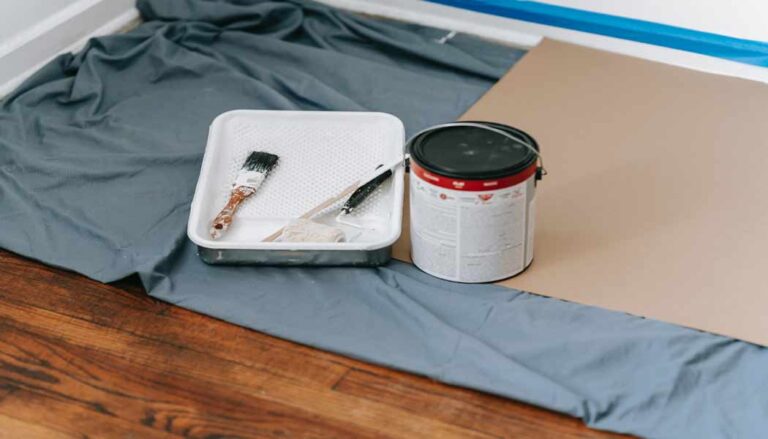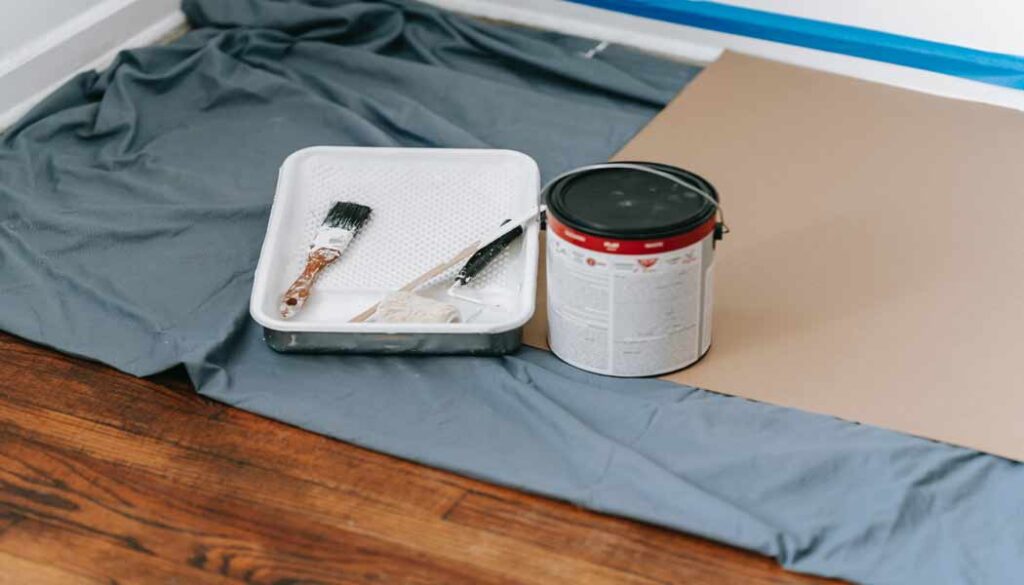
Is Enamel Paint Flammable? – Things to Know
Enamel paint can be flammable due to volatile solvents, igniting when near flames, sparks, or high heat. Use in well-ventilated areas, away from ignition sources. Read the manufacturer’s safety instructions before use.
Greetings, home decorators and painting aficionados! If you’ve ever turned tired furniture into exquisite pieces of art, chances are you’re familiar with enamel paint. It’s a quiet champion in the painting world, celebrated for its glossy finish and enduring durability.

Yet, amidst the excitement of revitalizing your surroundings, a crucial question often arises: Is enamel paint flammable? This article aims to illuminate this burning question and provide you with a comprehensive understanding of enamel paint’s flammability.
Join us as we start a journey to uncover the truth behind potential flames. Let’s delve in and extinguish the misconceptions surrounding this vivid realm of colors and gloss!
Is Enamel Paint Flammable?
Imagine you’re working on giving an old piece of furniture a vibrant new look. You may be adding a personal touch to your crafts too. You’ve got your enamel paint ready, the color is exciting, and you’re all set to dive in.
Enamel paint is fantastic for achieving that smooth and durable finish you’re aiming for. But, here’s the thing – enamel paint can be a bit of a firecracker when it comes to flammability.
Yes, enamel paint is flammable due to the presence of volatile solvents in its composition.
These solvents can easily ignite when exposed to flames, sparks, or heat sources. It’s important to handle and store enamel paint with caution and follow proper safety guidelines to minimize the risk of fire.
Enamel paint contains these little things called volatile solvents. They’re like the spirited dancers of the paint world, giving it its texture and shine. However, they also happen to be quite sensitive to heat, flames, and sparks. Imagine them as being a tad too eager to join the party if things get a little too hot around them.
So if you’re planning to work with enamel paint, make sure you’re doing it in a well-ventilated area. You want those fumes to have some space to groove out and not build up. And speaking of heat, let’s keep a safe distance from open flames and anything that radiates heat – stoves, heaters, you name it.
Storing your enamel paint is also like giving it a cozy place to chill. Keep it in a cool, dry spot away from sunlight and heat sources. When you’re done, be sure to dispose of any used paint containers and rags properly. We’re talking about safety here, after all.
Remember, water-based enamel paints are more chilled out on the flammability scale, even if they have a little spark in them. So, no matter what kind of enamel paint you’re working with, follow these friendly guidelines to ensure your creative journey is smooth and safe. Happy painting!
Is Enamel Paint Still Flammable after Drying?
Enamel paint typically contains solvents that evaporate as the paint dries. It leaves behind a protective coating. Once the paint has completely dried, the solvents have generally evaporated, and the paint has undergone a chemical transformation to become solid.
This process reduces the flammability of the paint compared to its wet state. Consequently, enamel paint is no more flammable after drying! Fully dried enamel paint is generally less flammable than when it was in its liquid, wet state. The absence of volatile solvents reduces the risk of combustion.
However, it’s important to note that even dry enamel paint could still be flammable under certain extreme conditions, such as exposure to high heat or an open flame. So, it’s advisable to handle and store painted objects away from sources of heat or flames. Extreme heat could potentially affect the paint’s composition and increase its flammability risk.
Is Enamel Paint Flammable to the Touch?
Enamel paint itself is not typically flammable to the touch once it has dried and cured. However, during the painting process, when the paint is still wet and contains solvents, it can be flammable. While enamel paint dries, it releases some funky fumes. These fumes are like the early bird at the party, and they’re quite flammable.
If you introduce open flames, sparks, or heat sources to these fumes, things could get a little fiery. So, while the paint is still wet or in the process of drying, it’s important to keep your distance from anything that goes sizzle.
Now, patience is key. Let the paint take its sweet time to fully dry and cure. Depending on the type of paint and the environment, this could be anywhere from a few hours to a few days. Once it’s all set and dry, it’s like the fumes have said their goodbyes and you’re left with a stable, non-flammable work of art.
When it comes to working with wet enamel paint, think safety first. Make sure your workspace is well-ventilated – let those fumes dance away! And absolutely no sparks or open flames allowed nearby. Oh, and those brushes, rags, and other tools that get cozy with the wet paint? Toss ’em safely to prevent any unexpected fume-fueled shenanigans.
So, there you have it. Enamel paint can be quite the chameleon – going from flammable fumes to a stable, non-flammable finish. As long as you follow these safety tips and give the paint its time to dry and cure, you’re all set to create a masterpiece without any unexpected fireworks!
Is Enamel Paint Explosive?
Enamel paint is not inherently explosive under normal circumstances. Enamel paint consists of pigments suspended in a solvent-based carrier. It is commonly used for its durability and glossy finish. The solvents in enamel paint are volatile and can be flammable in their liquid state.
Explosiveness is a property typically associated with volatile substances. These substances can rapidly release a large amount of energy. Enamel paint, once it has dried, does not have the characteristics necessary for an explosive reaction. It becomes a solid film adhering to the surface it was applied to.
While using enamel paint, work in ventilated areas, and avoid heat or flames. The paint’s volatile solvents pose flammability risks, especially when in the liquid state. Always store and handle paints responsibly to ensure your safety.
Final Words
As we conclude, it’s clear that knowledge is a potent asset in home improvement and safety. Enamel paint has rightly established itself in our creative endeavors. While apprehensions about flammability hold merit, armed with accurate information, you can confidently engage with your paintbrush and roller.
Remember, awareness is key to a successful and secure painting project. Always read labels, grasp product details, and follow application guidelines. Whether reviving furniture or brightening walls, understanding your materials ensures pleasing results and a safe environment.
So, fellow painters, fret not! Enamel paint, used responsibly, poses minimal flammability risk. With the insights from our journey, you’re ready to make informed choices and approach projects with newfound confidence.
